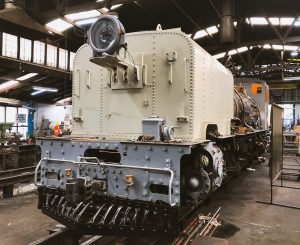
Progress abounds down in the Belgrave workshop, as the storage racking gets lighter and the engine gets heavier! Work in progress or completed to date includes:
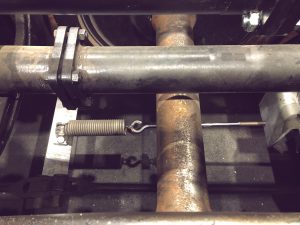
- Brake release spring and brackets manufactured and fitted.
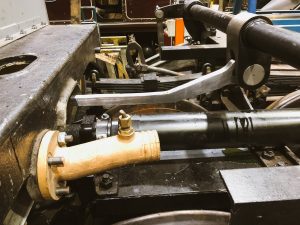
- Reversing rods between intermediate and main reversing shafts have been fitted. In front can be seen the stub connection with accepts the flexible water hose from the water tank to the boiler cradle, and then on to the injector feedwell.
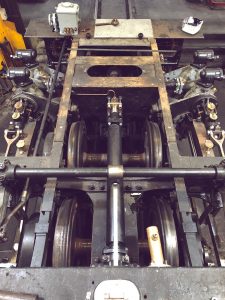
- The live steam pipes between the flexible ball joints (lower) and the expansion joints (upper), have been fully insulated, clad and fitted, running below the weighshaft. Also visible is the oil feed to the expansion joint, which lubricates the pipe as it slides in the packing, helping to eliminate steam leaks.
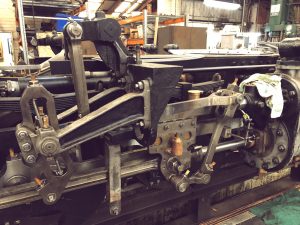
- With most of the valvegear and reversing gear fitted, measurements were taken to centre the reversing gear, ensuring that mid-gear on the reverser corresponds to mid-gear at the actual valvegear.
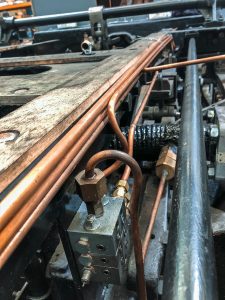
- With all the main components in place, a start is made on the headache that is NG/G16 engine unit lubrication pipework!
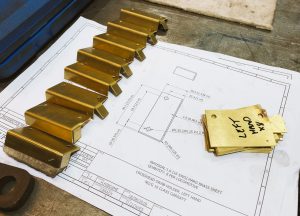
- These swab holders are used to retain a felt swab which, attached to the crosshead, keeps the slidebars clear of dirt.
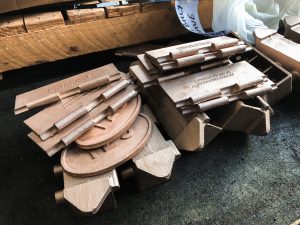
- Among the castings received recently were these 4-way oil pots, complete with lids. With 1 for each axlebox, there are 2 feeds for the thrust faces and 2 feeds for the horn faces.
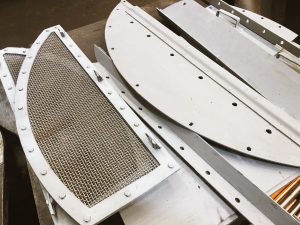
- The spark arrestor mesh has now been delivered, allowing all the removable grids and associated platework and retaining clips to be completed.
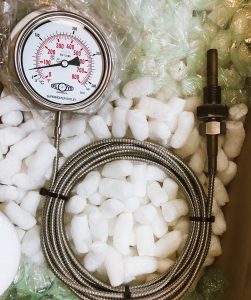
- Another recent delivery was this brand new thermocouple and temperature gauge. The thermocouple screws into a socket in the superheater header, and allows the driver to see how much superheat the engine is producing.
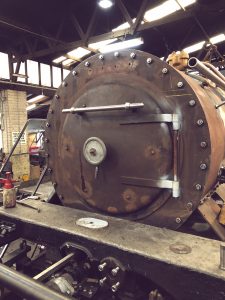
- The smokebox door has been fitted, following the addition of steelwork to retain a fibre rope which provides a flexible and effective draft seal. The hinges have been overhauled and a new baffle fitted to the inside of the door. Handrail stanchions were CNC machined and are now attached, along with the handrail.
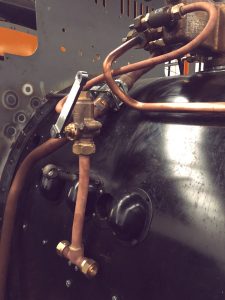
- The drifting steam valve is mounted to the boiler, the operating linkage is being fabricated and much of the pipework to the leading and hind engine unit steam pipes has been installed.
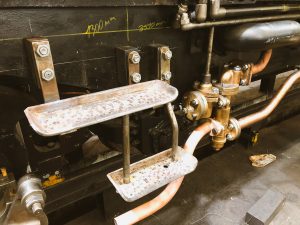
- The original cab steps have been refitted, following the manufacture of spacers to ensure the steps retain their position relative to the cab doorway and the edge of the footplate. Both the footplate and the cab have been increased in width by 3” per side, to maintain the line of the engine unit footplate. The taper of the boiler cradle main frame at this point also differs from the original design, due to the increased clearance required for the regauged inner pony truck.
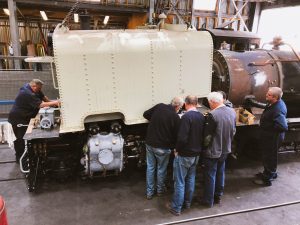
- The front water tank was lowered into position following some initial modifications to the footplate surrounding the weighshaft, and the location of anode sockets on the underside on the tank.
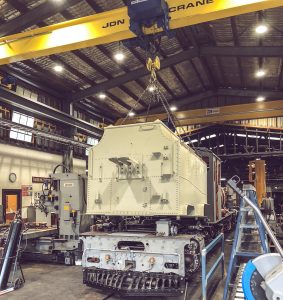
- Following trial fitting of the hind tank/coal bunker unit (above), modifications were made to make the shovel plate removable (below). This will make the job of fitting and removing the tank in future far simpler.
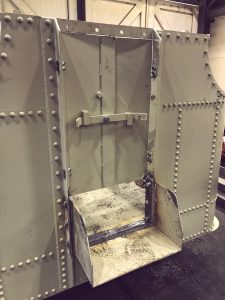
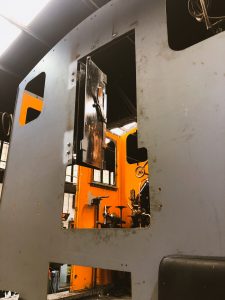
- Bi-fold door on the rear sheet of the cab has been fitted, which provides access to the coal bunker.
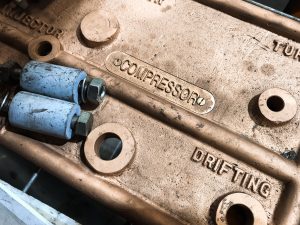
- A cast insert for the spindle guide plate has been fitted so that the ‘EJECTOR’ label now correctly read ‘COMPRESSOR’, reflecting the change from vacuum to air brakes.
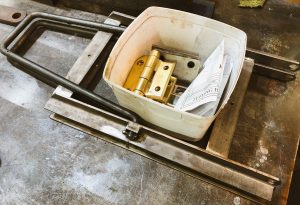
- Cab seat frames have been fabricated
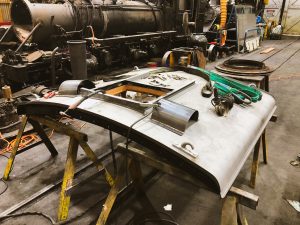
- Above and below, the cab roof has been fully timber lined and varnished and, following the fitting of the ventilator parts, is now ready to be reunited with the rest of the cab which remains attached to the boiler cradle.
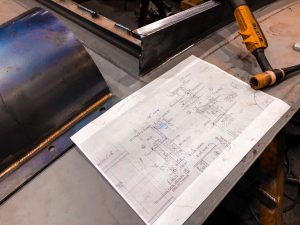
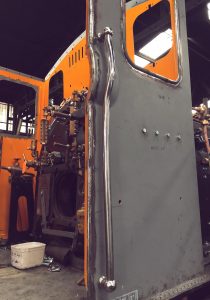
- Detail work continues on the cab structure, including sliding ventilators, window frames, and the fitting of hand rails, as seen above.
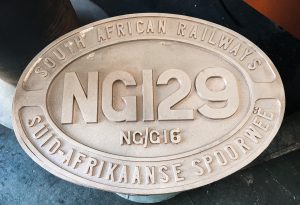
- Last but by no means least, along with our recent delivery of castings were the new cab side plates. These are accurate replicas of the original NG/G16 number plates carried by the engine and reflect the locomotives heritage as indigenous to the South African Railways.

